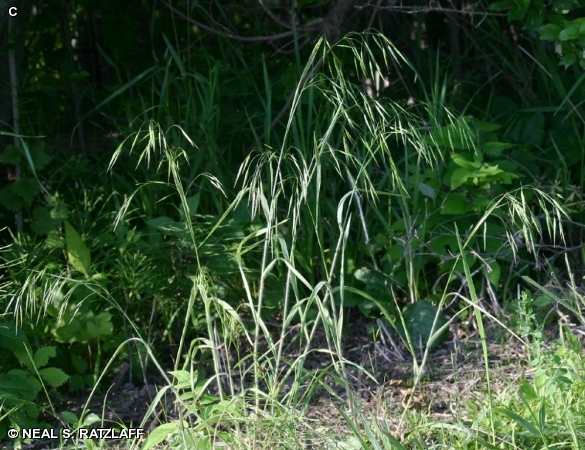
An introduced annual with upright or ascending stems up to 24 inches tall and narrow, hairy leaves. The open, nodding, often wavy panicle branches (B) bear numerous hairless spikelets composed of 6-13 florets, each tipped with an awn up to 1/2 inch long that is bent or spread outward at maturity (E). Leaf sheaths are densely covered with long, soft white hairs (F).
Disturbed areas; waste ground. This plant is an annual which thrives on disturbance. At the time the present photos were taken, Japanese Brome was very common in the new floodplain prairie planting just beyond the blind. As the prairie planting has developed its incidence has diminished significantly. Keep looking for it in areas of disturbance. At Neale Woods this plant is rare. It has been seen along lower Gifford Trail at the edge of the woods. Flowering occurs from late May to July.
Dense stands of very similar Downy Brome (Bromus tectorum), which also thrives on disturbance, occur occasionally at the railroad track crossings, but have not been seen elsewhere in Fontenelle Forest. Look for it when crossing the tracks at Mormon and Spring Hollows. Unlike Japanese Brome, its spikelets are often reddish-purple at maturity and are covered with fine hairs, hence the name “downy”.
The content of NatureSearch is provided by dedicated volunteer Naturalists of Fontenelle Forest who strive to provide the most accurate information available. Contributors of the images retain their copyrights. The point of contact for this page is: Neal Ratzlaff.





